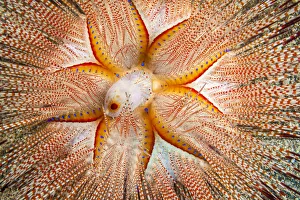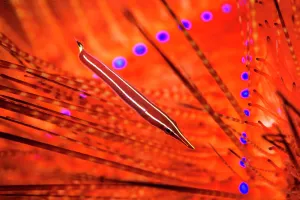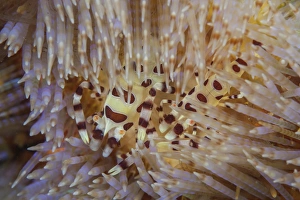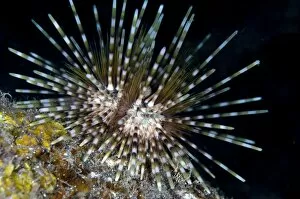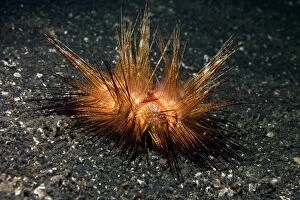Diadematidae Collection
"Discovering the Enchanting World of Diadematidae: A Fascinating Family of Sea Urchins" Diving into the depths of Lanai, Hawaii's Pacific Ocean
All Professionally Made to Order for Quick Shipping
"Discovering the Enchanting World of Diadematidae: A Fascinating Family of Sea Urchins" Diving into the depths of Lanai, Hawaii's Pacific Ocean, one encounters a mesmerizing sight. The vibrant reef is adorned with an array of marine life, including the magnificent Long-spined sea urchin (Astropyga radiata), its spiky silhouette standing out against the backdrop. Amidst this underwater wonderland, other captivating creatures make their presence known. The graceful Raccoon butterflyfish (Chaetodon lunula) glides effortlessly through the water, while the endemic Saddle wrasse (Thalassoma duperrey) adds a burst of color to this tropical paradise. One cannot miss spotting another member of the Diadematidae family –the Sea urchin (Diadema sp. )– as it gracefully moves along the reef. However, it is worth noting that in Hawaii, sightings of its elusive cousin, the Blue-spotted sea urchin (Astropyga radiata), are rare and considered a special treat. Venturing further across oceans brings us to North Sulawesi in Indonesia. Here we find an intriguing association between two species –the Yellow stripe clingfish (Diademichthys lineatus) and its unlikely companion, the Fire Urchin (Astropyga radiata). These unique partnerships remind us how interconnected marine ecosystems truly are. Hawaii also boasts other fascinating members within this family such as Banded Sea Urchins and Rock boring Urchins like Echinometra mathaei. Their distinctive characteristics add diversity to these already awe-inspiring surroundings. Intriguingly enough, even venomous spines do not deter certain inhabitants from finding refuge among them. Colemans shrimp have made themselves at home amidst these dangerous yet beautiful fire urchins—a testament to nature's ability to adapt and thrive.



